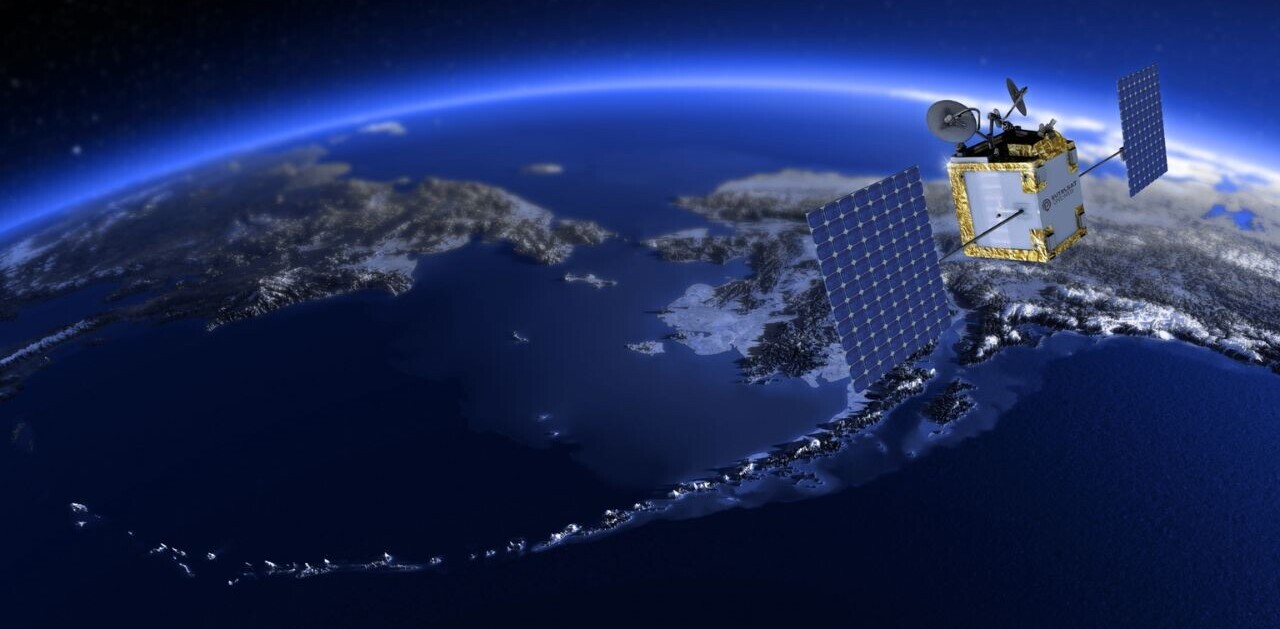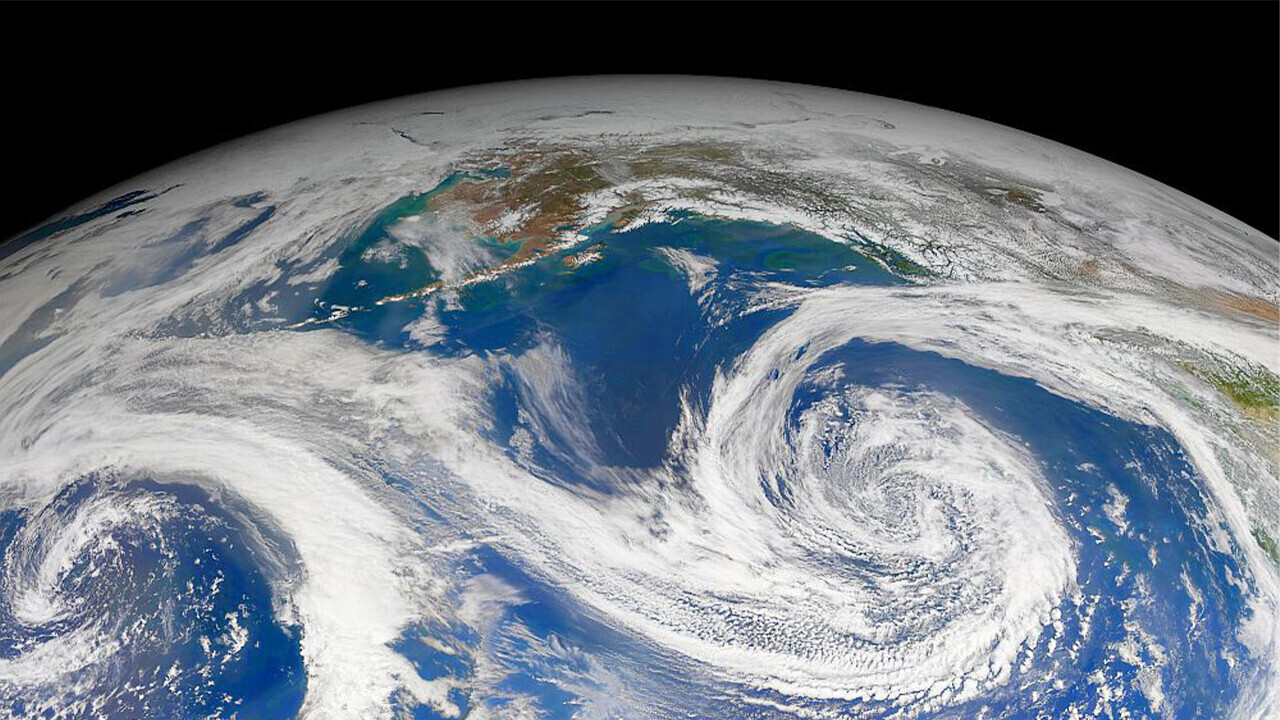
Space exploration is the grandest endeavor the human race has ever undertaken. Reaching out beyond the planetary cradle on which we evolved represents the next logical step in the evolution of the human race. In the words of Gene Roddenberry, space truly is “the final frontier.”
It is certainly tempting to think of exploration as coming at a tremendous financial cost. There are also many pressing needs right here at home, which must be addressed. Perhaps surprisingly for some, the best hope we have to solve many of our challenges here on Earth is to venture beyond the confines of the planet we call home.
Here are the top ten ways that space exploration benefits Earth:
Number Ten: Technology

Water is essential to life, and large populations are unable to access clean water for drinking or cooking, spreading disease and infections. Cheap, easy-to-use water filtration systems now being distributed to people worldwide were developed from NASA’s need to filter water in space.
Our food is now significantly safer, thanks to NASA. The Hazard Analysis and Critical Control Point concept developed by Pillsbury for NASA, kept contamination off food being packed into spacecraft. Now, the FDA uses these same techniques to keep dangerous microorganisms out of food before it is ever shipped to the store for purchase.
Heart disease can now be treated by implantable heart aids that act as miniature defibrillators, thanks to the pure research of space exploration. Keyhole surgery, devised to perform surgery in space, allows surgeons to work within bodies while watching on a video screen, using just small incisions.
Robots and artificial intelligence now being developed for the International Space Station and the return of humans to the Moon promises to further technology here at home, aiding those with physical challenges, reducing car accidents, and aiding in disaster relief.
These benefits come from a surprisingly small investment in space exploration. A significant portion of the population has little to no idea how much money is invested in science and technology, leading many people to conclude (or believe) that funding is much higher than real-life budgets reveal.
In some ways, space agencies are a victim of their own success. When looking at the results of magnificent missions, it is tempting to believe the exploration of space comes with a tremendous financial burden. Yet, actual budgets are far from that misguided notion.
NASA receives less than one-half of one percent of the Federal budget, and just one-quarter of this goes to planetary science. The entire budget for NASA — roughly 20 billion dollars a year — is roughly equivalent to the amount of money Americans spend on vegan meat substitutes or Halloween costumes.
Fossil fuel subsides around the world reached $5.9 trillion in 2020, according to The International Monetary Fund (IMF). That same year, governments around the globe spent about $82.5 billion on space exploration. Just these subsidies to the fossil fuel industry alone represent more than 70 times the investment nations make to space exploration and research.
“To stabilise global temperatures we must urgently move away from fossil fuels instead of adding fuel to the fire. It’s critical that governments stop propping up an industry that is in decline, and look to accelerate the low-carbon energy transition, and our future, instead,” said Mike Coffin, senior analyst at the thinktank Carbon Tracker.
Solar cell and insulating technology developed for spacecraft and future human existence beyond our home world might be adapted for use here at home, reducing our dependence on fossil fuels.
Number Nine: Gathering Investment When Taxes Aren’t Gonna Do It
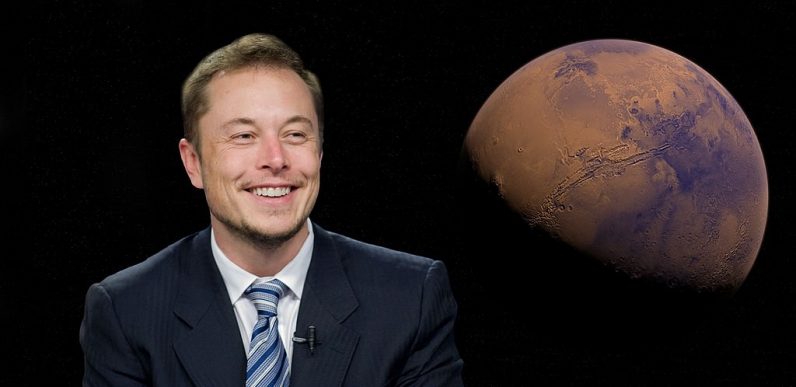
But — what about billionaires going to space?
Richard Branson invested a little over a billion dollars developing Virgin Galactic over 17 years. Let’s assume he had been taxed on every dollar of that (he wouldn’t have been). Assuming every dollar was taxable (it wouldn’t have been), and his accountants didn’t hide a penny (they would have), and every bit of it was taxed at 37 percent — the highest rate possible under current laws (it wouldn’t have been).
Now — one billion dollars, taxed at 37 percent (the top marginal tax rate), means tax revenue to the Federal Government of 370 million dollars. With roughly 330 million people in the U.S., this maximum lost tax revenue works out to about $1.10 per American. And, since that amount was spread out over 17 years, the math crunches out to less than six-and-a-half cents per American, per year. People could, literally, donate 10 cents a year to a good cause and more than make up for what Blue Origin cost the U.S. in lost tax revenue.
Of course, Elon Musk, through SpaceX, has invested far more in technology than any other private space endeavor. However, SpaceX is also highly successful, bold and daring, regularly flying to the International Space Station, an essential step to the Moon and beyond.
Seen to its fruition, the vision of Elon Musk will see humans become a fully interplanetary species in just a new decades. The long-term survival of the human race will no longer be held hostage by short-sighted leaders and failed economic policies.
Famed astronomer, science popularizer, (and my childhood idol), Carl Sagan spent much of his time rallying and educating the world against the greatest existential crisis of his day — nuclear proliferation. (More on nuclear war later, don’t worry).
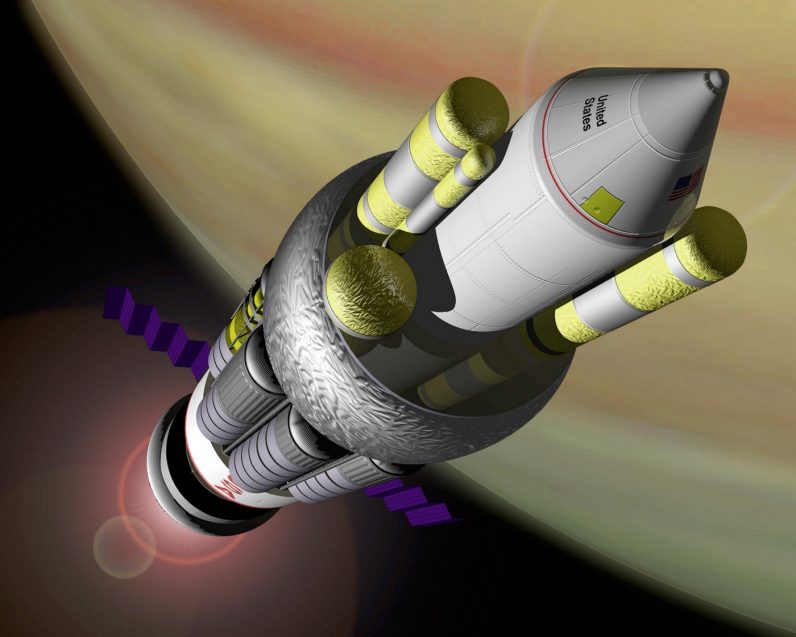
When The British Interplanetary Society and a team of physicists including Freeman Dyson conceptualized a way to bring us to the stars using the same nuclear weapons that threatened our existence, Sagan responded with “Personally, the Orion Starship is the best use of nuclear weapons I can think of.”
Under our far-from-perfect tax laws, perhaps the development of private spaceflight by the well-to-do may be one of the best uses they could make of enormous wealth. Soon, it may be that space exploration benefits Earth by funneling funds from the ultrawealthy into scientific projects that benefit all — something our current tax system should do but doesn’t.
We don’t yet know what benefits will come from public or private spaceflight, but even the limited forays of government-funded programs show oceans of knowledge and new technologies await us.
Space exploration benefits humanity to a far greater degree than the ultrawealthy buying an island or spending capital on stock buybacks.
Number Eight — Space Development Advances Rights for All

Accompanying Bezos on his suborbital flight on 20 July were both the youngest and oldest persons yet to fly beyond the confines of Earth. One, Wally Funk, had trained for spaceflight since the days of the Mercury program in the early 1960s.
Funk was one of the First Lady Astronaut Trainees (FLATs), popularly known as the Mercury 13 — a group of women who, in the early 1960s, undertook training to become astronauts. Unfortunately, none of these women flew to space at that time, despite several passing all the Mercury-era tests they undertook.
While the USSR launched Valentina Tereshkova to space in 1963, highly-qualified women in the United States remained grounded on Earth — a snub which took decades to rectify. Today, however, NASA and its associated organizations are champions of diversity and inclusion.
“Although both Cobb and Cochran made separate appeals for years afterward to restart a women’s astronaut testing project, the U.S. civil space agency did not select any female astronaut candidates until the 1978 class of Space Shuttle astronauts. Astronaut Sally Ride became the first American woman in space in 1983 on STS-7, and Eileen Collins was the first woman to pilot the Space Shuttle during STS-63 in 1995. Collins also became the first woman to command a Space Shuttle mission during STS-93 in 1999,” NASA officials write.
Today, women and people of color regularly fly beyond the confines of Earth.
And now, the 82-year-old Funk has finally touched space, showing that seniors (and women) can do anything they set their minds to doing.
Accompanying her was 18-year-old Oliver Daemen, the youngest person ever to fly to space. He was there on a paid ticket, but as young people experience space, youth worldwide will see people like themselves journeying beyond Earth, inspiring children and teens to lives of science.
Funk’s record was short-lived, however, when 90-year-old William Shatner embarked on his own 11-minute star trek on 13 October 2021 (seeing… surprisingly few… THINGS… on the… WING!).
Space exploration shatters long-standing barriers, bringing us all closer to our own final frontier.
Number Seven — Fixing Climate Problems — Water You Waiting for?

Human beings can live just a few minutes without adequate oxygen. However, during the “successful failure” of Apollo 13, NASA engineers had an even more pressing problem on their hands — a buildup of carbon dioxide in the air (sound familiar?).
In order for large numbers of people to live in space, it will be necessary to design systems capable of removing carbon dioxide in the atmosphere of space stations and planetary outposts. Much of the same technology which goes into cleaning air aboard these stations can be repurposed to reducing damage to our atmosphere here on Earth.
Even if we stopped putting carbon into the atmosphere tomorrow, climatic changes would continue to get worse for decades. The atmosphere and oceans are slow to respond. One of the best hopes we have to reverse climate change is to remove greenhouse gases from the atmosphere of Earth. Technology for space exploration offers some of the best ways we have to develop the means of carrying out that monumental task.
A worldwide battle against climate change will require constant monitoring of weather, climatic trends, and large-scale events affecting local regions such as volcanic eruptions. This data to understand and mitigate climate change can only be collected by satellites above our home planet.
Modern human civilization is dependent on energy. Moving away from fossil fuels means the replacing energy with renewable sources. Solar cell technology has made significant advances over the last few years, and this technology can be advanced by exploring space.
Clean water may seem free and plentiful in the United States and Europe, but this is not the case in much of the world. In fact, over the coming decades, global warming could even result in the complete loss of fresh potable water in southern Florida.
Access to fresh drinking water is already driving large migrations of immigrants away from their homes around the world, and this loss of water could soon become a leading cause of wars in the coming decades. In 2016, India experienced significant unrest due to water shortages, and similar demonstrations recently took place in Iran.
“In 2017 alone, water was a major factor in conflict in at least 45 countries, including Syria. Its importance as a resource means that water-related insecurity can easily exacerbate tensions and friction within and between countries. It can be weaponized; nefarious actors can gain control of, destroy, or redirect access to water to meet their objectives by targeting infrastructure and supplies. Advancements in cyber attacks on critical infrastructure raise further concerns as to the security of water systems,” the World Economic Forum reports.
Today, researchers designing water systems for spaceflights and our first homes on other worlds are developing revolutionary systems to clean and process water, as well as to grow crops in ground that would otherwise be devoid of life.
The easiest way to stave off coming damage, including wars, is to stop them in from happening in the first place. It will be a lot simpler — and less expensive — to design next-generation water filtration and delivery systems than it would be to move everyone out of southern Florida and deal with the consequences of wars around the globe.
Today, several nations and other interests are developing missions to place human and robotic beings at the south pole of the Moon, where water might be found in deposits of long-frozen ice. Everywhere we send humans into space, we will need to produce, filter, clean, and recycle this life-sustaining resource. That future technology needed to carry out this task has the potential to revolutionize how we support life on Earth.
Number Six — Truths, Half-Truths, and the Internet

When the National Science Foundation (NSF) was founded in 1950, the organization opened astronomical observatories nationwide. This excitement about science, combined with lowered financial barriers to higher education, sent large numbers of additional students nationwide to school, driving the development of Apollo, the Space Shuttle, and the Hubble Space Telescope.
One of the great opportunities we have as a global society in the 2020’s is the ability to listen to so many people and news organizations online (We are your favorite, you say? Why, thank you!).

However, with great wealth of sources, comes great responsibility (We still miss you, Stan!). Readers and viewers are faced with finding high-quality reporting among an endless morass of less-than-reliable sources. (We are your most-trusted source for news about space exploration and astronomy? Why, you are just too kind!).
Developing and encouraging space exploration directly feeds science education, providing a pathway for talented scientists to obtain an education. Scientific training provides tools to weigh evidence and see through falsehoods.
Living in the 21st Century — and beyond — requires a populace who focus on realistic news reports and learn to separate grains of truth from the chaff of ratings-building faff. Science provides the best set of tools available to inoculate our populace against the dangers of pseudoscience and mendacity.
From the early days of Mercury and the Moon landing, through the flight of the Ingenuity helicopter on Mars, space exploration excites people, bringing us together as a species, and encouraging the most-curious among us to study the Cosmos around us.
Number Five — Science Supports Families and Communities
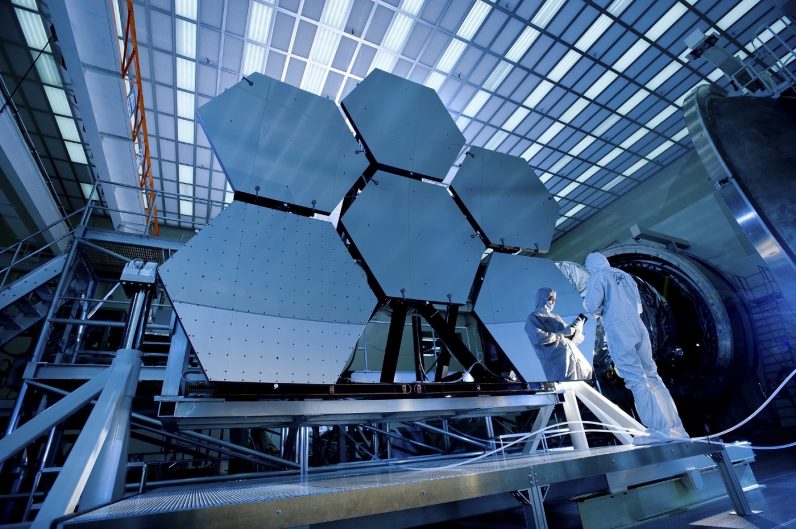
The James Webb Space Telescope is one of the most-expensive scientific endeavors in history, comparable only to the Hubble Space Telescope and the Large Hadron Collider at CERN.
This project cost roughly 10 billion dollars over 24 years — around 420 million dollars a year. Europe and Canada, together, contributed an additional billion dollars to the construction of this revolutionary instrument.
This amount of money may seem enormous, but it is a drop in the bucket compared to other Federal expenditures.
“To quantify this, in the same 2003–2026 period that NASA will spend $9.7 billion on Webb, the United States government will spend, in total, approximately $101 trillion. The James Webb Space Telescope accounts for a mere 0.0095% of all U.S. spending during this period — the equivalent of setting aside a single penny out of a 100 dollars to answer fundamental questions about our cosmos.,” The Planetary Society reports.
And, this money did not just appear as pile of cash which quickly disappeared from an airport tarmac. The money spent on Webb, and other projects like it, largely goes to supporting thousands of good-paying jobs, feeding local communities and families around the nation.
“The project’s new $9.7 billion life-cycle cost estimate is principally driven by the schedule extension, which requires keeping the contractor’s workforce to complete integration and test longer than expected. Specifically, the project determined that almost all of the hardware had been delivered and the remaining cost was predominantly the cost for the workforce necessary to complete and test the observatory,” the Government Accounting Office reported.
Around 1,000 full-time job equivalents were supported in 2018, and following launch, around 300 full-time job equivalents of employment will be generated through 2026 by Webb alone.
“At the end of the day, all of the money spent for space is spent on Earth, primarily on our best and brightest engineers, technicians, and scientists, challenging them to solve the most vexing problems. It is an investment in our collective mind trust, seeding creativity and expertise for our future,” states Casey Drier, Senior Space Policy Adviser at The Planetary Society, tells The Cosmic Companion.
Number Four — Answering the Greatest Question Ever Asked

Roughly 250,000 years ago — a thousand centuries before the last Ice Age began, ancient people (modern humans, sans the phones) sat on the African plains, gazing skyward at the sparkling lights shining against the dark backdrop of space.
Some, the more curious of the bunch, may have wondered what these lights were, how far away they lay, and — possibly — if those beacons were distant campfires. Perhaps a few dared to suggest these fires might be encircled by other unknown people, asking themselves the very same questions.
Today, we might stand at the precipice of answering that ancient question — are we alone in the Universe?
The James Webb Space Telescope will soon have the ability to study the atmospheres of alien planets in unprecedented detail. These studies could reveal the telltale traces of life on other worlds for the first time.
Such a discovery, although far short of a close encounter of the third kind, would announce that we are not alone in the Universe. This revelation will herald a new age of our understanding of the Cosmos, our world, and each other.
Number Three: Space Exploration Could Lead to the End of Nations

Toward the end of the most recent Ice Age, humans formed into patrilineal clans — small groups of ancient people led by their local dominant male. This early experiment of isolating into groups led by those most willing and able to fight and subjugate others did not end well.
The clans battled their neighbors in deadly clashes worldwide which left a large fraction of the human race dead. Over the course of a few centuries, nearly all the human males around the world had wiped themselves out.
It was not until the human race was 94 percent female that fighting died down enough for human culture to survive. This event is seen today as the Neolithic Y-chromosome bottleneck revealed in our human genes.

With the possible exception of the Hatfield/McCoy feud of the late 19th Century, our recent history has been largely devoid of such familial conflict.
Civilization later progressed through the era of city-states and villages, which in turn went to war with each other (Ancient Athens and Sparta, I’m looking in your direction…).
Such city-states (and their attendant wars) were later absorbed into the roles of nations, and empires. Today, nations frequently battle each other, with varying degrees of transparency and fanfare.
Blind devotion to a nation, government, or demagogue can stir a population into foisting war on another group of people. In addition to direct costs associated with war, homeless, despair, and mass migrations of populations frequently take their toll on diverse populations.
Most of the space stations and habitations of the future will be developed, built, and maintained by international consortiums, along with private interests.
Populations might soon be living in homes on the Moon 3D-printed by China, breathing fresh air from American air filtration systems, drinking water from water recycling devices from Russia, travelling in craft designed by European engineers, and receiving supplies from Indian or Arab supply vehicles. To whom will they owe their allegiance?
Suppose you were born in space, never having visited Earth. Is a border skirmish on a distant world going to mean anything at all to you or your peers?
ONLY spaceflight has the potential to end the ultimate source of our current problem — rampant nationalism. Space exploration could finally make nations obsolete.
Number Two: Don’t Put All Your Humans in One Bucket
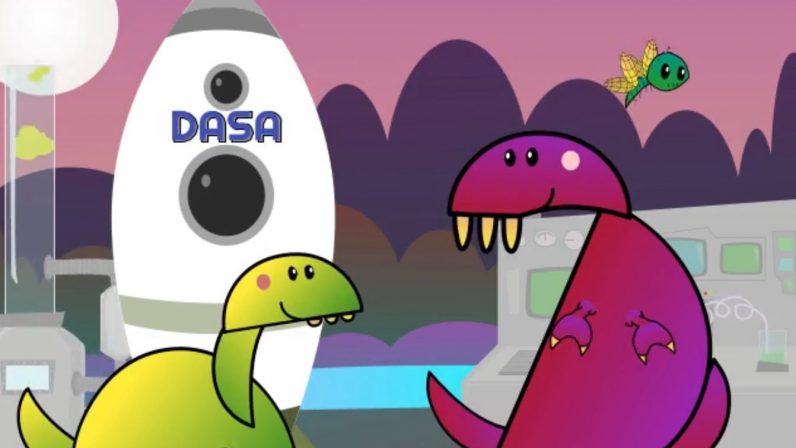
Earth faces a wide range of the threats, both natural and humanmade. Asteroids or comets could pummel our planet at any time, a lesson the dinosaurs learned the hard way. (That pun rocked!).
Other natural disasters could also wreak havoc around the globe. The Yellowstone supervolcano last erupted 70,000 years ago, and a similar occurrence today would cause widespread destruction over a vast region.
“Those parts of the surrounding states of Montana, Idaho, and Wyoming that are closest to Yellowstone would be affected by pyroclastic flows, while other places in the United States would be impacted by falling ash…Such eruptions usually form calderas, broad volcanic depressions created as the ground surface collapses as a result of withdrawal of partially molten rock (magma) below,” the U.S. Geological Survey (USGS) describes.
Changes to the environment after such a disaster could last decades. Additionally, the Yellowstone Supervolcano is not alone in its destructive power.
“Volcanoes that have produced exceedingly voluminous pyroclastic eruptions and formed large calderas in the past 2 million years include Yellowstone, Long Valley in eastern California, Toba in Indonesia, and Taupo in New Zealand. Other ‘supervolcanoes’ would likely include the large caldera volcanoes of Japan, Indonesia, Alaska (e.g. Aniakchak, Emmons, Fisher), and other areas,” the USGS reports.
Earth has seen extinctions before, and if dinosaurs had developed a space program, life on this planet may have been far different. (We humans will soon be testing our first systems to deflect asteroids before they can become threats to our world).
In addition to natural disasters, our species is not held hostage to the vagrancies of political leaders filled with more bravado than empathy. Fueled by jingoistic nationalism, a rogue leader (or worse, leaders) could easily march our species onto a fiery demise in a blaze of thousands of nuclear fireballs.
A failure to adapt to other global challenges facing our species — including global climate change — could also endanger civilization on this planet through increased extreme weather events, the loss of biodiversity, or geological changes forced by human activity.
Permanent human habitations in space are our ONLY hope of protecting the future of our species from destruction from nuclear war or other cataclysms sparked by unstable leaders or a fickle Cosmos.
Number One: The Overview Effect
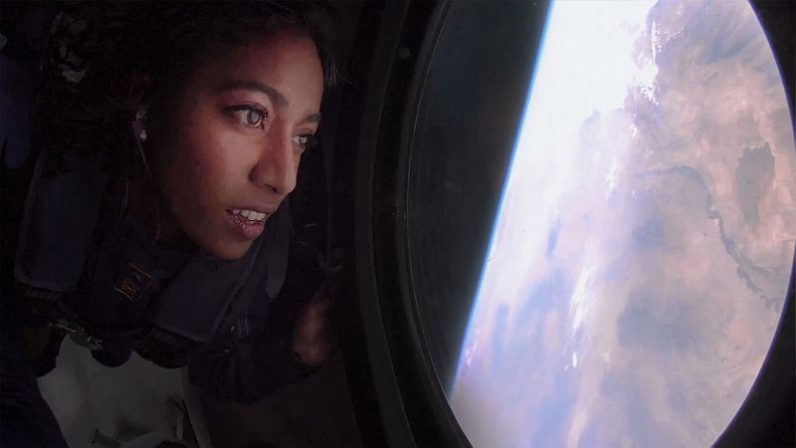
Since the earliest days of human spaceflight, those fortunate enough to journey beyond the reach of Earth’s atmosphere are often overcome by a sense of the interconnectedness of life, and the fragility of our delicate ecosystem.
Since 1987, this shift in perspective has had a name — The overview effect.
“[I]t’s really hard to convey it, because all you have is words. And part of it is seeing the Earth itself. Part of it is seeing the Earth against the backdrop of the universe… You also, you’re actually seeing the universe for the first time in a way that no human has seen it. You’re also moving around the Earth frequently. Time changes. You realize time is very Earth-bound, the way we think about it,” Space philosopher and author Frank White, author of The Overview Effect, states.
Words, images, even video fail to convey the majestic paradigm shift that accompanies the overview effect. There is only one way to impart this feeling onto others.
“I suppose one of the most important insights was that if we want people to understand the overview effect in a way that will lead to changes in their behavior, we have to have them experience it. Now, it’s like Zen Buddhism. If you know anything about Zen Buddhism, every Zen master will say, Zen is beyond words…” White continues.
Perhaps, once enough people (particularly world leaders) experience the overview effect, seeing our fragile atmosphere from above, and the land spread out before them devoid of national borders, the world could become a far different place.
We stand at the precipice of moving beyond the need for nations, ensuring our species is protected from any planet-wide disaster, and we may finally answer some of the greatest questions of human existence. We can educate masses, develop multiple novel means of reversing global climate change, and extend equality and opportunity to traditionally underserved communities.
Space exploration makes it all happen.
This article was originally published on The Cosmic Companion by James Maynard, the founder and publisher of The Cosmic Companion. He is a New England native turned desert rat in Tucson, where he lives with his lovely wife, Nicole, and Max the Cat. You can read the original article here.
Get the TNW newsletter
Get the most important tech news in your inbox each week.

